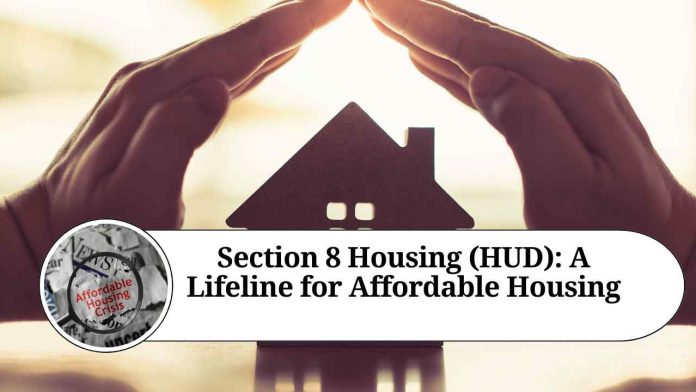Introduction
In an era where housing costs continue to rise and income inequality persists, the need for affordable housing options is more critical than ever. One vital program addressing this issue is Section 8 Housing, administered by the U.S. Department of Housing and Urban Development (HUD). In this blog, we will explore the significance of Section 8 Housing, its benefits, and how it serves as a lifeline for individuals and families in need.
Understanding Section 8 Housing:
Section 8 Housing, also known as the Housing Choice Voucher Program, is a federal initiative designed to assist low-income individuals and families in accessing safe and affordable housing. Established under the Housing and Community Development Act of 1974, the program has provided countless households with stable housing and improved living conditions.
How Section 8 Housing Works:
The Section 8 program operates through partnerships between HUD, local public housing agencies (PHAs), and private landlords. Eligible participants receive housing vouchers that subsidize a portion of their rent, enabling them to find suitable housing in the private rental market.
The amount of assistance a household receives is determined by factors such as income, family size, and the local rental market. Participants typically contribute 30% of their adjusted income towards rent, with the remaining balance covered by the voucher. This ensures that individuals and families do not spend an excessive portion of their income on housing, freeing up resources for other essential needs.
Benefits of Section 8 Housing:
- Affordable Housing: Section 8 Housing provides a lifeline for low-income households, allowing them to access safe and affordable housing that would otherwise be out of reach.
- Choice and Flexibility: Unlike traditional public housing, Section 8 participants have the freedom to choose their housing from a wide range of options in the private market. This gives them greater control over their living situation and fosters a sense of independence.
- Improved Living Conditions: The program sets certain housing quality standards that landlords must meet to participate. This ensures that Section 8 participants are living in well-maintained, habitable homes, leading to improved living conditions and enhanced quality of life.
- Stability and Security: By providing stable housing, Section 8 helps to reduce homelessness and housing instability. Families and individuals can establish roots within their communities, leading to better educational opportunities, increased social connections, and improved overall well-being.
- Economic Mobility: Section 8 Housing promotes economic mobility by freeing up financial resources for families to invest in education, job training, and other avenues for self-improvement. This can help break the cycle of poverty and create a pathway towards long-term self-sufficiency.
Challenges and Future Considerations:
While Section 8 Housing has been instrumental in addressing housing affordability, there are some challenges that need to be addressed. One of the major concerns is the limited funding available for vouchers, resulting in long waiting lists in many areas. Expanding funding for the program and reducing wait times are crucial steps towards ensuring that more individuals and families can benefit from this vital assistance.
Additionally, increasing collaboration between PHAs and landlords is important for expanding housing options for Section 8 participants. Encouraging private landlords to participate in the program and providing them with incentives can help address the shortage of affordable housing units.
Conclusion
Section 8 Housing, administered by HUD, plays a significant role in providing affordable housing solutions for low-income individuals and families. By offering rental subsidies and promoting choice and flexibility, this program serves as a lifeline for those in need. However, continued efforts are required to expand funding, reduce wait times, and enhance collaboration between PHAs and landlords to meet the increasing demand for affordable housing.
Read more useful content:
Frequently Asked Questions (FAQs)
Q. What is Section 8 Housing?
Section 8 Housing, also known as the Housing Choice Voucher Program, is a federal initiative administered by the U.S. Department of Housing and Urban Development (HUD). It provides rental assistance to low-income individuals and families, allowing them to secure safe and affordable housing in the private rental market.
Q. How does the Section 8 program work?
The Section 8 program operates through partnerships between HUD, local public housing agencies (PHAs), and private landlords. Eligible participants receive housing vouchers that subsidize a portion of their rent. They can then find suitable housing in the private rental market, and the voucher covers the remaining balance of the rent.
Q. Who is eligible for Section 8 Housing?
Eligibility for Section 8 Housing is based on factors such as income, family size, and citizenship status. Generally, households with incomes below 50% of the area median income are given priority. However, specific eligibility criteria may vary by location, as PHAs have some flexibility in determining local preferences and requirements.
Q. How is the amount of rental assistance determined?
The amount of rental assistance provided through Section 8 is determined by several factors, including the participant’s income, family size, and the local rental market. Typically, participants are required to contribute 30% of their adjusted income towards rent, with the remaining balance covered by the voucher.
Q. Can Section 8 participants choose where they want to live?
Yes, one of the key advantages of the Section 8 program is that participants have the freedom to choose their housing from a wide range of options in the private rental market. They can select a suitable unit that meets their needs and that accepts Section 8 vouchers, provided it meets certain housing quality standards.
Q. How long is the waitlist for Section 8 Housing?
Waitlist times can vary significantly depending on the location and demand for vouchers. In some areas, the waitlist may be several months or even years. It’s important to contact the local PHA to inquire about the waitlist and application process in your specific area.
Q. Are Section 8 vouchers transferable to different locations?
Section 8 vouchers are generally portable, meaning that participants can use them in different locations as long as there is a participating PHA and suitable housing available in the new area. The process for transferring vouchers varies by PHA, and it’s important to inform your current PHA if you plan to move.
Q. Are Section 8 Housing units inspected for quality and safety?
Yes, the Section 8 program sets certain housing quality standards that landlords must meet in order to participate. Before a unit can be rented to a Section 8 participant, it undergoes an inspection to ensure that it meets these standards for safety, cleanliness, and habitability.
Q. Can Section 8 Housing assistance be terminated?
Section 8 Housing assistance can be terminated under certain circumstances, such as if the participant violates program rules or their income increases to a point where they are no longer eligible. Additionally, participants are required to recertify their eligibility periodically to ensure continued assistance.
Q. How can I apply for Section 8 Housing?
To apply for Section 8 Housing, you need to contact your local PHA. They will provide you with the necessary information and application forms. It’s important to note that there may be specific application periods or waiting lists, so it’s advisable to reach out to the PHA as soon as possible to begin the application process.




















